My second visit to this idyllic spot in Mozambique – with almost the same latitude as Gaborone. I flew Air Botswana to Johannesburg which only takes 40 minutes or so, and then another direct flight on LAM to Inhambane, another hour. So I was able to leave Gaborone in the morning and arrive in Tofo by lunch time. Desert to the sea.. it’s always a slight shock to the system seeing the endless blue. The plane made a huge circle, flying over Maxixe, the estuary, then Barra and Tofo with all the mangroves and palm trees creating an unreal backdrop for the landing strip. I love Inhambane airport, it’s tiny and has a lovely cafe right on the strip where those waving you goodbye or hello can watch just metres away as you get on or off the plane. I used a brilliant taxi service called Amigos, and Ernesto was waiting for me as soon as I’d cleared customs and immigration. Late January is hot, humid with plenty of spontaneous rain showers.


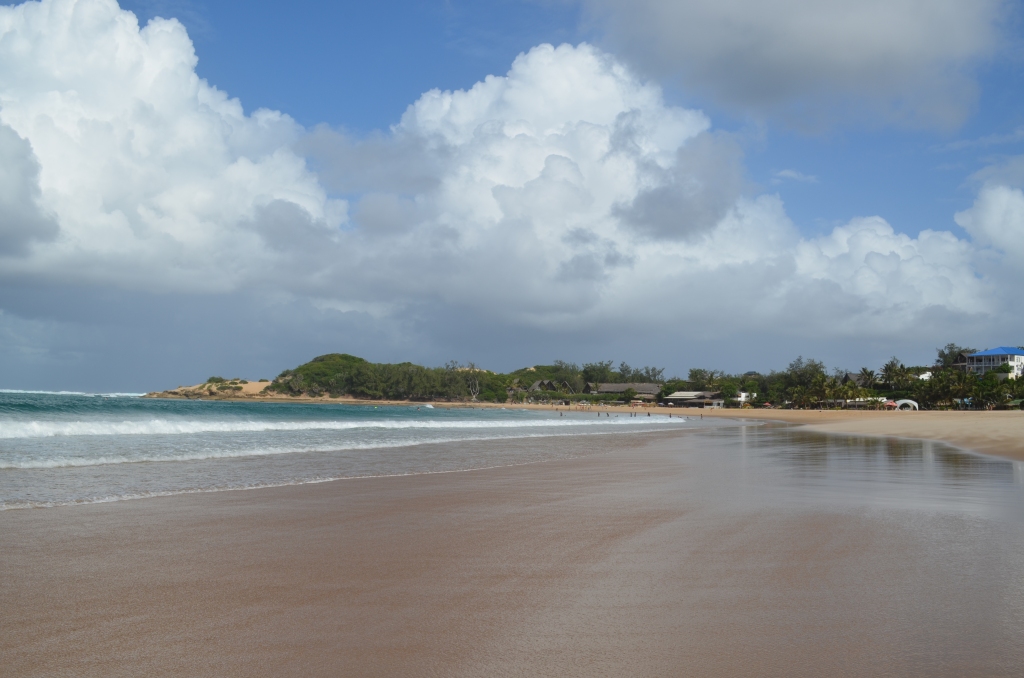
From the plane I’d seen lots of tiny shrubs with bright orange-red fruit on them, which I quickly learnt were locally called Mabobo, Diospyros rotundifolia. This wasn’t exactly going to be a holiday, more of a scouting trip, but with Tofo being Tofo, even work becomes a holiday. The food is yum, fresh fish, crab cakes, sushi, sizzling hot plates of scallops in the market, and cheap hideaways of rice and curry for only P25 (120 meticals/2usd). Accommodation has an equally dizzying array of choices, from right on the beach, to sunset views over the estuary, to eclectic yoga retreats, and garden airbnbs. There is live music at Tofo Tofo and Dathonga on certain nights, pool parties at Mozambeat, and even more activities for during the day – diving, surfing, fishing and snorkelling. With another activity that I always add in to anything I do – of plant spotting.

The dunes around Tofo beach range between 1 and 5m or so of elevation, around Tofinho up to 10m or higher, and further towards Barra or Praia da Rocha higher still.
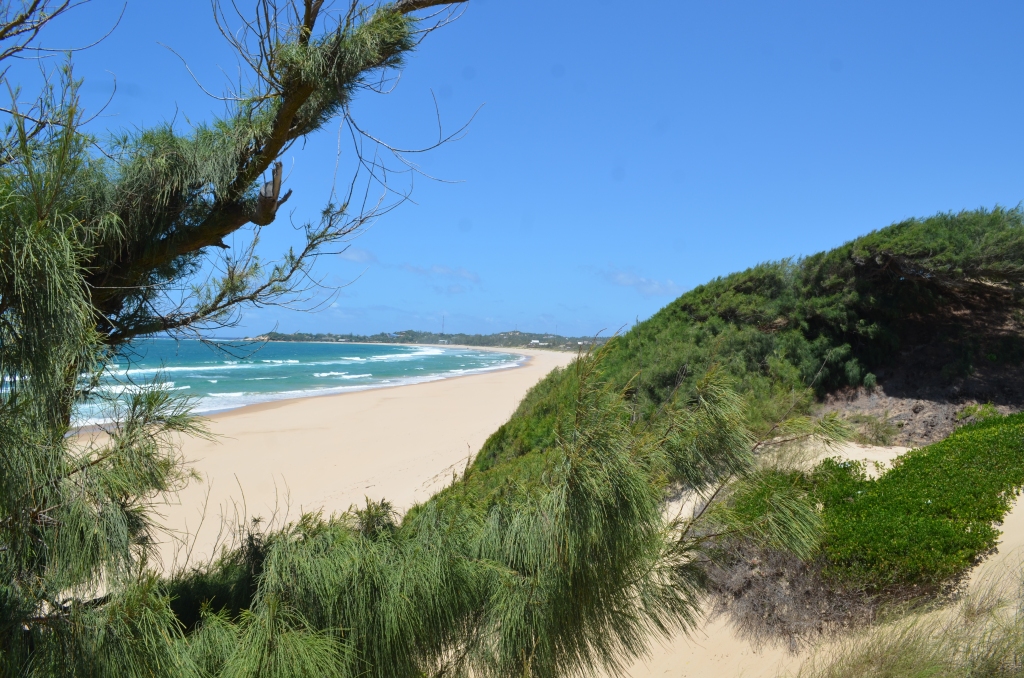
The main Tofo stretch is lined with Casuarina trees ( Casuarina equisetifolia). Back from the beach a bit, and a common garden tree are Indian Almond trees (Terminalia catappa). Their huge leaves are very decorative. All of these are introduced species, including Cashew (Anacardium occidentale) and Coconut palms (Cocos nucifera), with the latter three cultivated for the edible nuts and fruits. Indian Almond leaves are also reportedly used to treat scabies, leprosy wounds and other skin diseases.
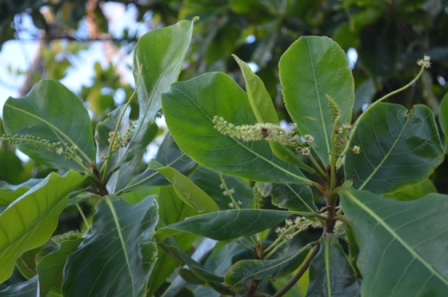



It is only as you go further away from the developed sections of the beach that you see more of the indigenous dune vegetation.

I saw some almost fynbos like species in one place with aromatic grey shrubs possibly Helichrysum.

Near or on the beach I found Canavalia maritima a vine that has pretty pink pea-like flowers; Cyperus crassipes, a robust tussocky sedge; Sporobolus virginicus – grass clumps on Tofinho beach and Ipomoea pes-caprae.

There are so many flowering plants on the dunes: Barleria prionitis subsp. delagoensis a popular garden plant in Botswana; Gloriosa superba, Flame lily, the national flower of Zimbabwe and valuable medicinal plant – the medicinal properties of the plant are due to the presence of alkaloids, chiefly colchicine, in seeds and rhizomes, and it is used to cure arthritis, gout, rheumatism, inflammation, ulcers, bleeding piles, skin diseases, leprosy, impotency and snakebites; Asystasia gangetica subsp. micrantha and Sesamum senecioides ( used to be Dicerocaryum) – a traditional soap; Carpobrotus dimidiatus (edible fruit); and lilies: Crinum spp. (lily with white flowers in summer) and Dipcadi brevifolium.


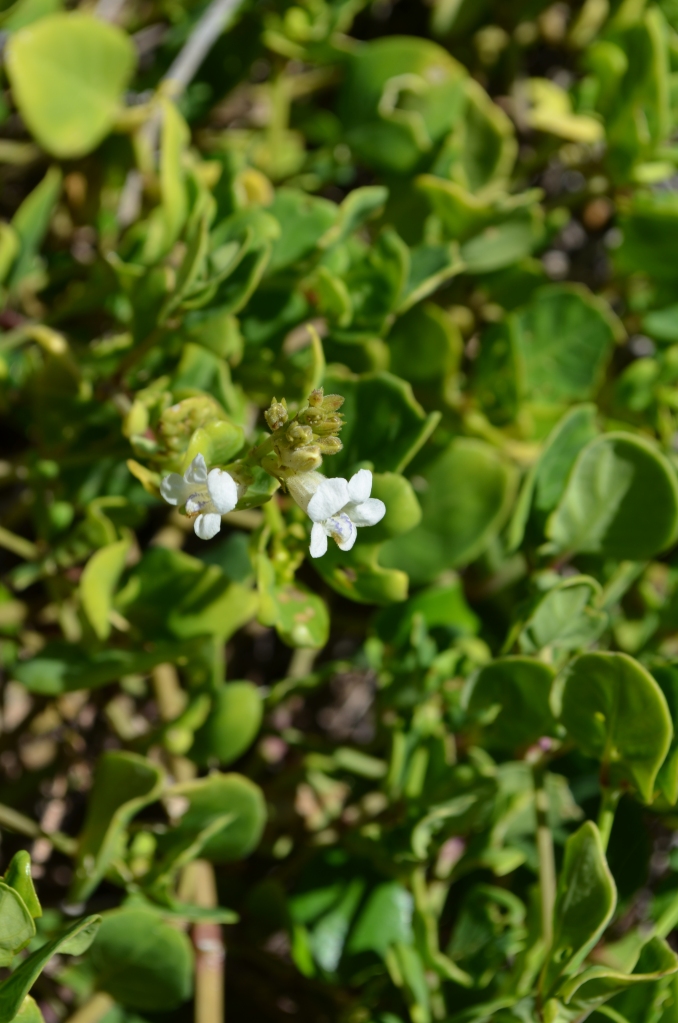
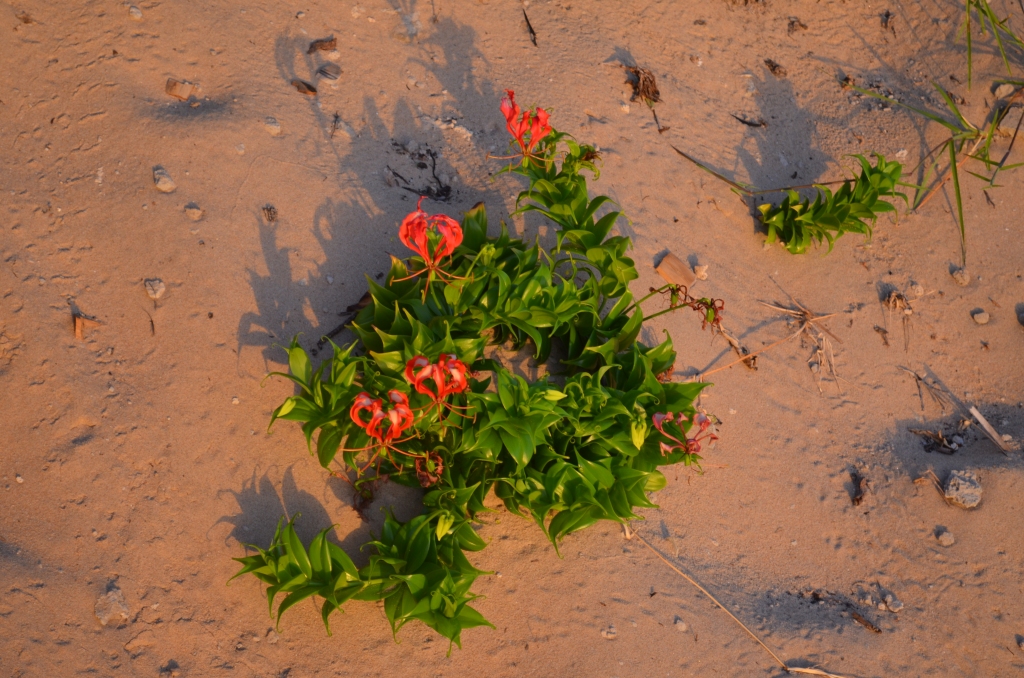



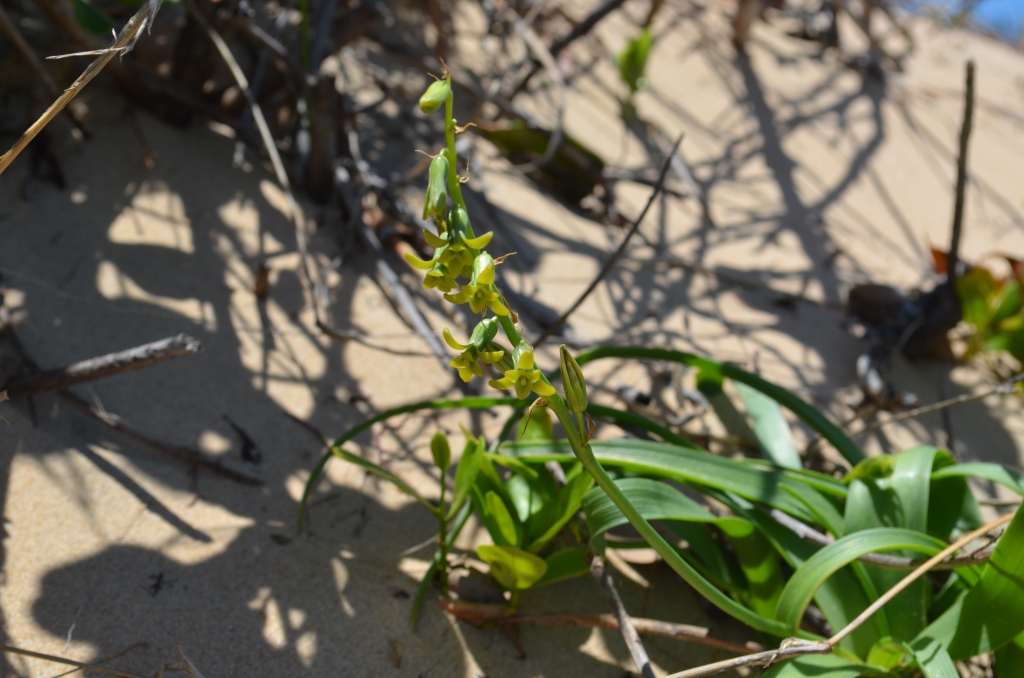
Some nitrogen-fixing plants also grow on the low-nutrient dune sands such as Chamaecrista paralias – a small woody shrub with and pretty yellow flowers, Tephrosia purpurea subsp. canescens, different Indigoferas: I. podophylla; I. nummulariifolia; I. paniculata and I. spicata.



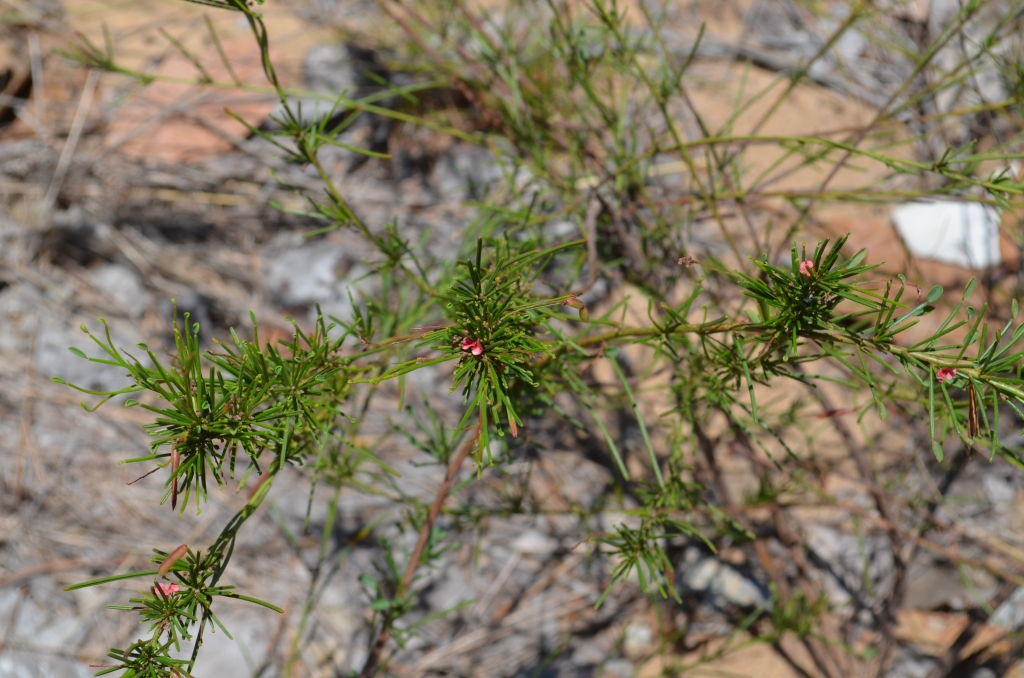
There are many vines that are threaded through the coastal vegetation, edible indigenous cucumber vines like Coccinia adoensis; the prickly nicker bean, Guilandina bonduc, the seeds of which possess anti-inflammatory as well as analgesic activity; parasitic Cassythia vines, aromatic jasmine – Jasminum fluminense, Cissus quadrangularis and Acacia pentagona.
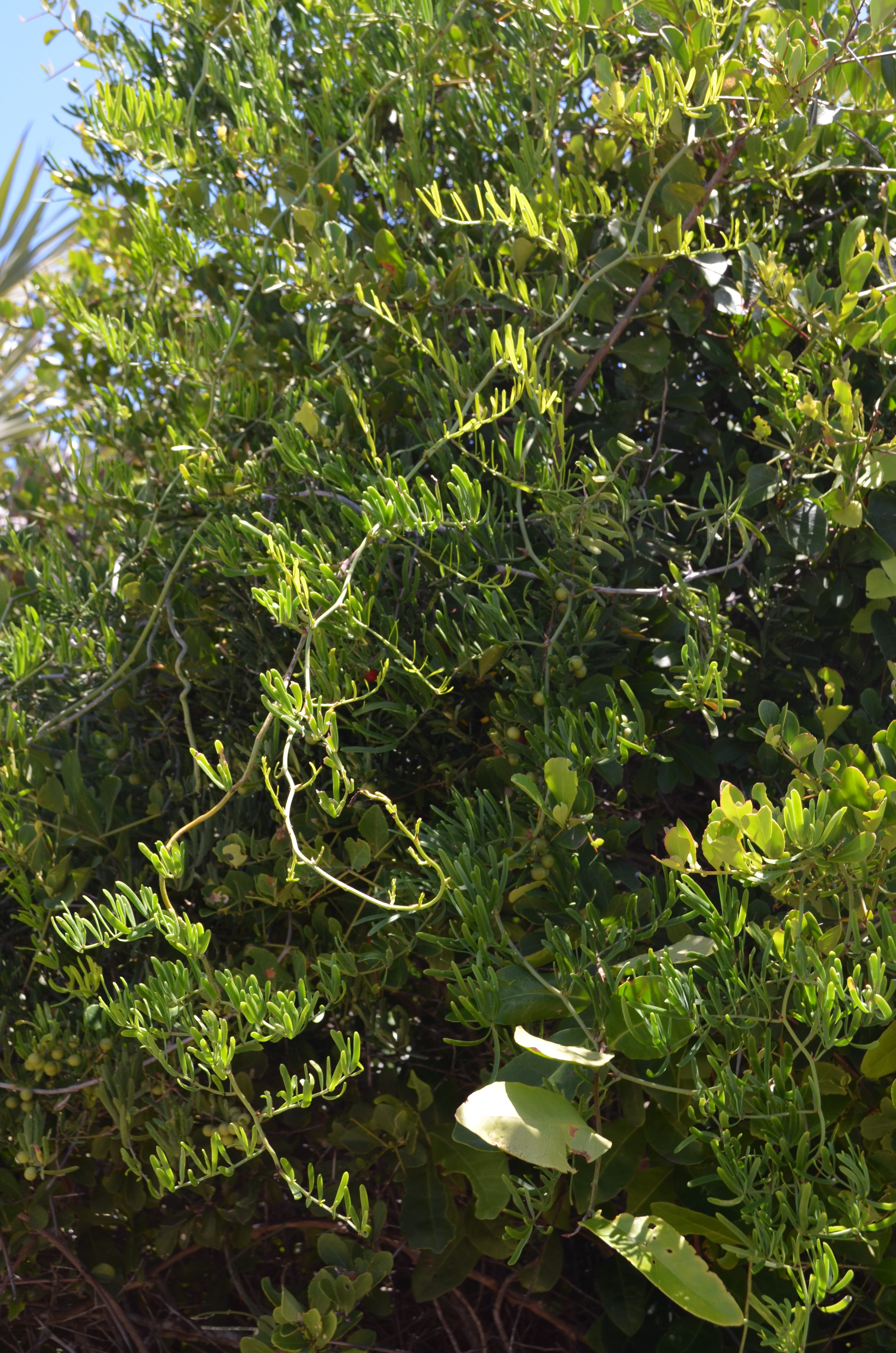

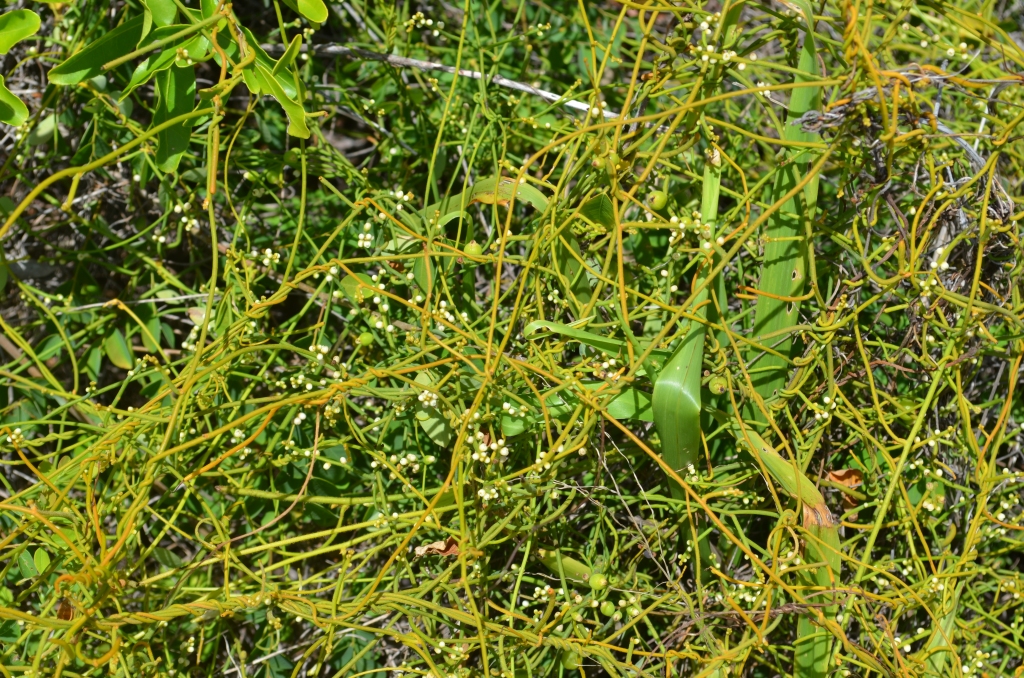
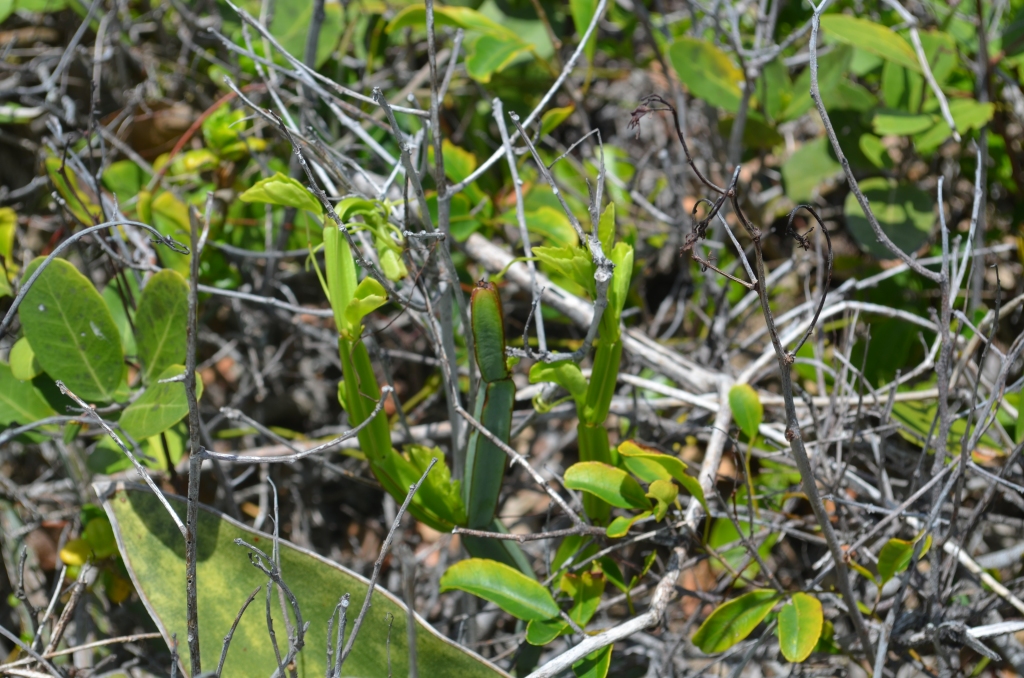

All sorts of shrubs such as Coptosperma littorale, Diospyros rotundifolia, Eugenia capensis subsp. capensis, Grewia caffra that has an edible berry, valued also for its medicinal uses; Mimusops caffra (sour plum) and Salacia kraussii also with edible fruits; Ozoroa obovata, Euclea undulata, Carissa bispinosa and Croton inhambanensis.


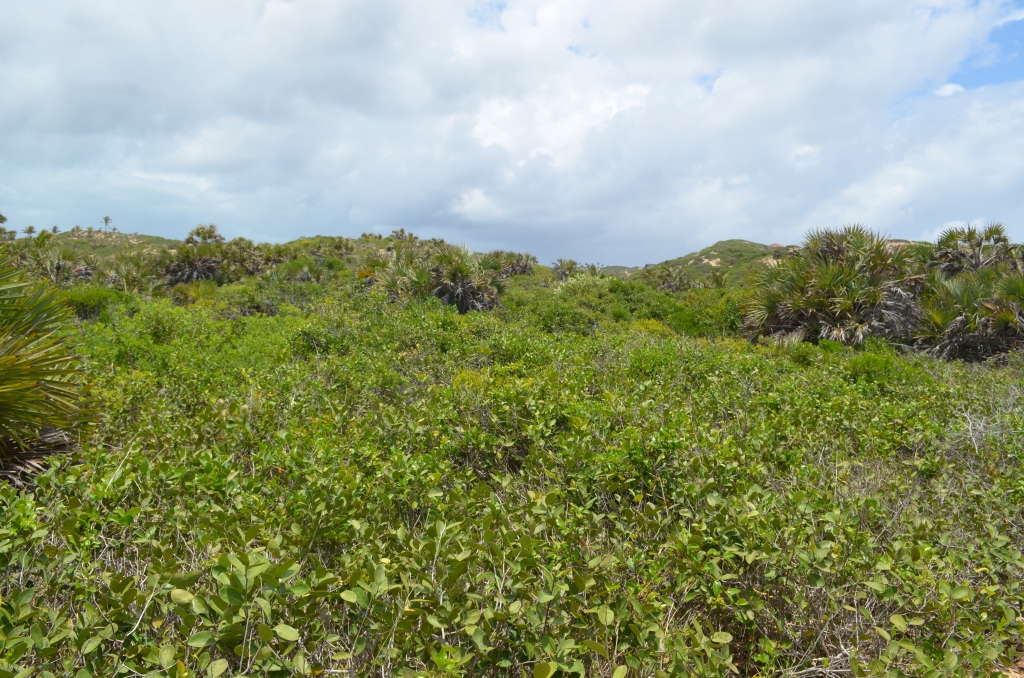


Palm species include: Cocos nucifera, Hyphaene coriacea and Phoenix reclinata


Trees include Sclerocarya birrea (Marula) and I even saw a baobab (Adansonia digitata) which I did not expect, plus Trichilia emetica (Natal mahogany). The seeds yield an oil locally called Mafura oil. The seeds are soaked in water and the milky soup is eaten with spinach. Seed arils are also soaked and cooked together with sweet potatoes or squash.



One of the common local dishes that you can eat in Tofo is Matapa – basically stewed cassava leaves with peanuts, coconut and a few other ingredients. You can see cassava (Manihot esculenta) growing all around Tofo and Inhambane. Raw cassava can be toxic due to naturally occurring forms of cyanide. Soaking and cooking cassava makes these compounds harmless. It’s also a good source of Vitamin C and the leaves can contain up to 25% protein.


There are many succulent species that make up sand dune vegetation too: such as Carpobrotus dimidiatus, Scaevola plumieri, Scaevola thunbergii, Euphorbia tirucalli, Cissus quadrangularis, and Sansevieria (Dracaena) species such as S. conspicua, S. concinna and S. hyacinthoides (syn. Dracaena hyacinthoides).
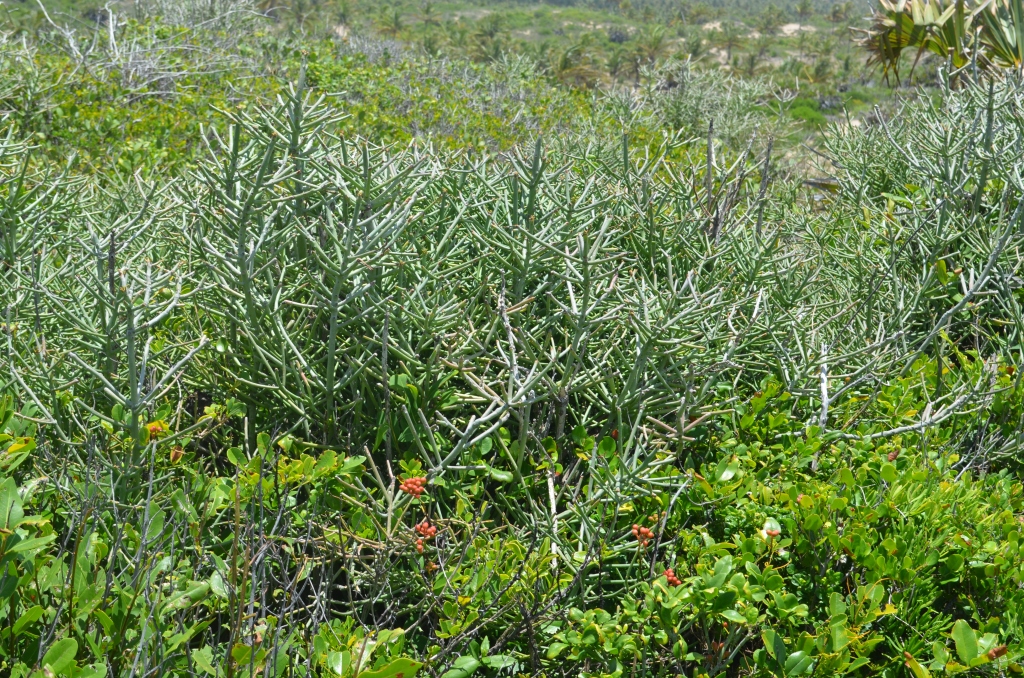
It was such a stunning trip and there is so much to appreciate in this tiny corner of the world, I only hope that beach developments conserve the indigenous vegetation, and appreciate the valuable benefits these plants give in terms of food, medicine, dune preservation, security and beauty.
I hope to see you again soon Tofo!
